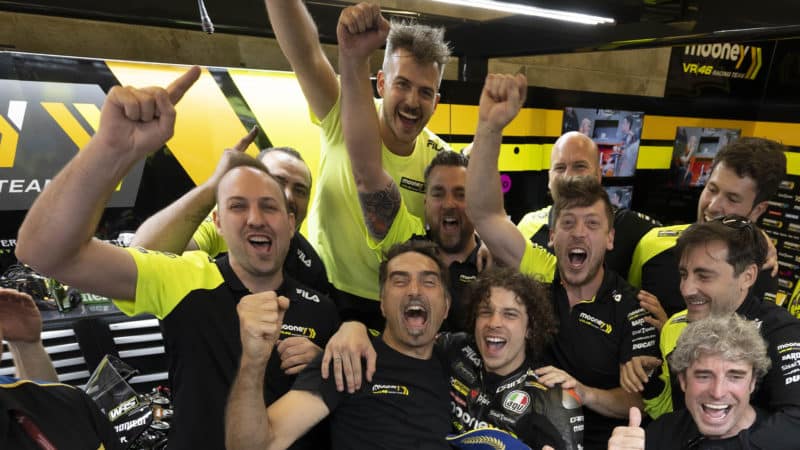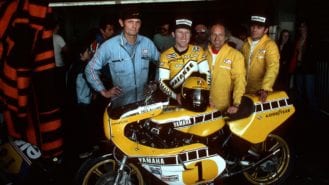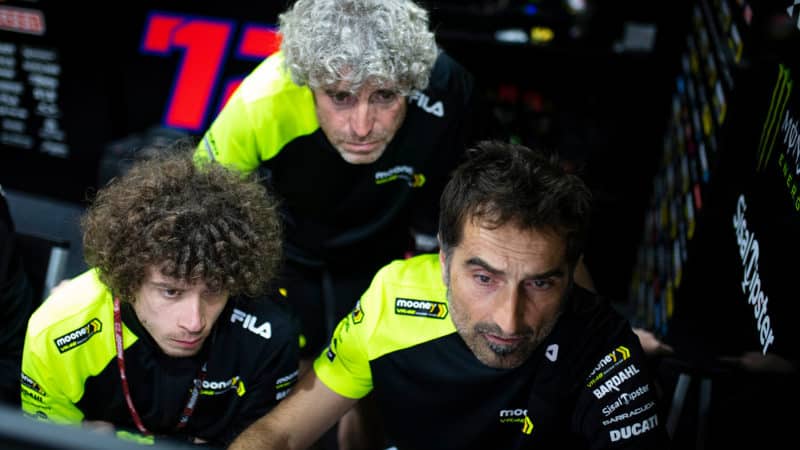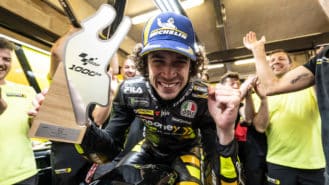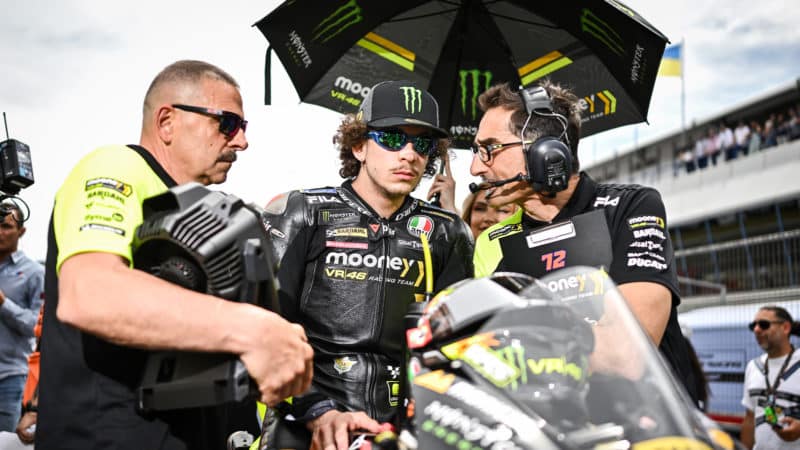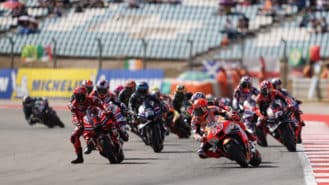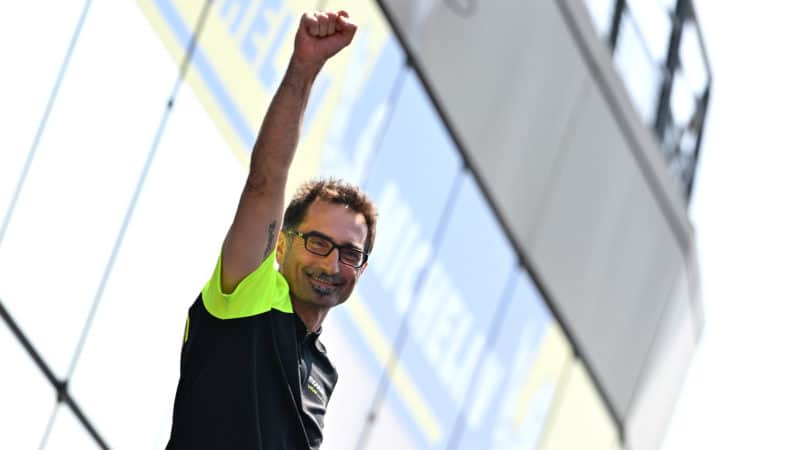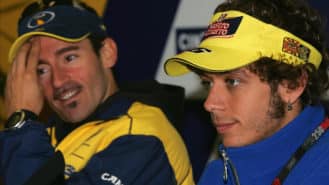Burgess, who won 13 MotoGP titles with Rossi, Mick Doohan and Wayne Gardner – taught Flamigni his basic philosophies of racing – like the KISS principle, Keep It Simple, Stupid – which the Italian still uses, despite the massive complexities of modern MotoGP.
Mat Oxley: How has your job changed since Rossi retired and you became Bezzecchi’s crew chief?
Matteo Flamigni: Before I was just – well, not just, because it’s quite an important job – controlling and taking care of all the electronic strategies: traction control, engine brake, power delivery and the other electronics, plus analysing all the data, making comparisons with other riders and stuff like that. Trying to improve the performance of the bike.
Now my job is 360 degrees because, in addition to the electronics, I take care of the dynamics of the bike – suspension settings, tyre pressure, brake configuration – so basically the bike in its entirety.
Which job do you prefer?
I like this job more because I have a complete picture of the bike. Before I was just focused on one part. Now I feel better because I control everything and have a better picture of everything. The way I am, I like to be precise, I like to have everything under control, so this job really suits me.
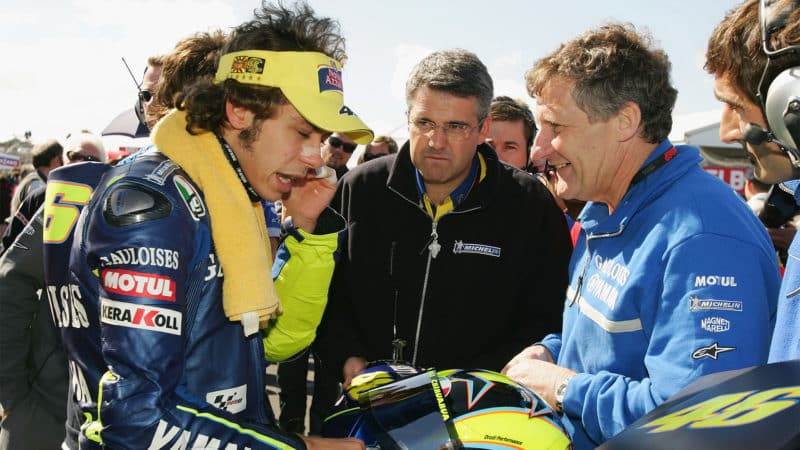
Flamigni (far right) with Rossi, Michelin tyre technician Pierre Alves and Burgess on the Phillip Island grid in 2004
Getty Images
Who did you work with before Rossi?
I worked at Yamaha with Max Biaggi, from 2000 to 2002, and with Marco Melandri in 2003. Before that with Loris Capirossi in 1999, when he rode Honda NSR250s, and before that with Alex Barros at Gresini, with Honda NSR500s. The two-stroke era was fun, I really enjoyed it.
I started my career in World Superbikes in 1994, when I was studying electronic engineering at the University of Bologna. I did my last exams while I was working in the paddock. But my best teacher was Jeremy Burgess!
I was going to ask you about JB – what made him so good at his job?
I liked the way he approached all the situations that can happen in a GP weekend. He was always very calm, whatever happened. He said to me, “Keep smiling and don’t panic, because you can make mistakes when you panic, so just try to stay calm, look at the entire picture and try to find the best solution, the easiest, the simplest.”
JB was always very keen on keeping things simple…
Yes, this is always my rule now.
But that can’t be easy because today’s bikes are so complicated.
Yes, now it’s difficult to follow that rule but I try my best to do it.
What about JB from the human side – you were in a team of mostly Australians, with their Aussie sense of humour and lots of swearing!
For me it was fantastic because I felt immediately part of a family, part of a group. They took me on board without any problems and made me feel like one of them. Like you say, Australian humour is a bit different from European humour, so in the beginning it was a bit hard, because I didn’t really understand if they were joking or being serious. But after a few months it was OK and I felt very, very good there, I really enjoyed it.
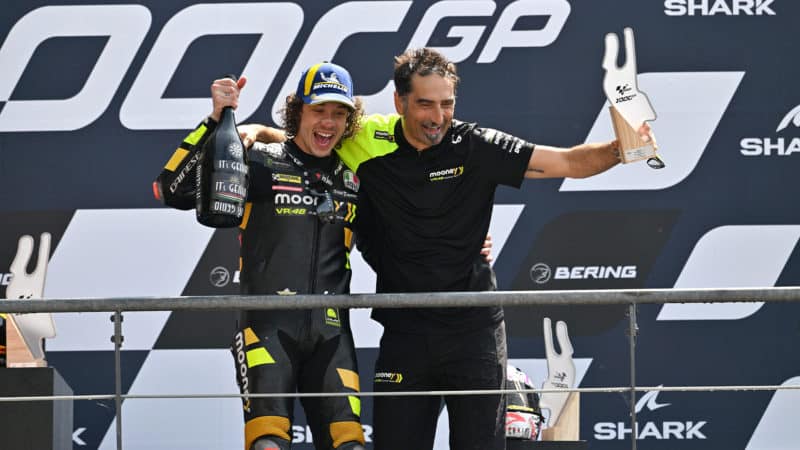
Bezzecchi and Flamigni celebrate their first dry-weather MotoGP victory at Le Mans last month
VR46
I spoke with JB recently and he told me that electronics often made him go into races with a ‘massive cloud over his head’, because he wasn’t sure if a problem could be fixed by him or by the electronics…
Yes, it’s like this. JB trusted me 100% and let me do my job. I tried to not make mistakes and I was able to do my job without any problems with him.
Because if you messed up with JB he would tell you!
I remember a test where we tried a new electronics device to improve the bike for Valentino…
